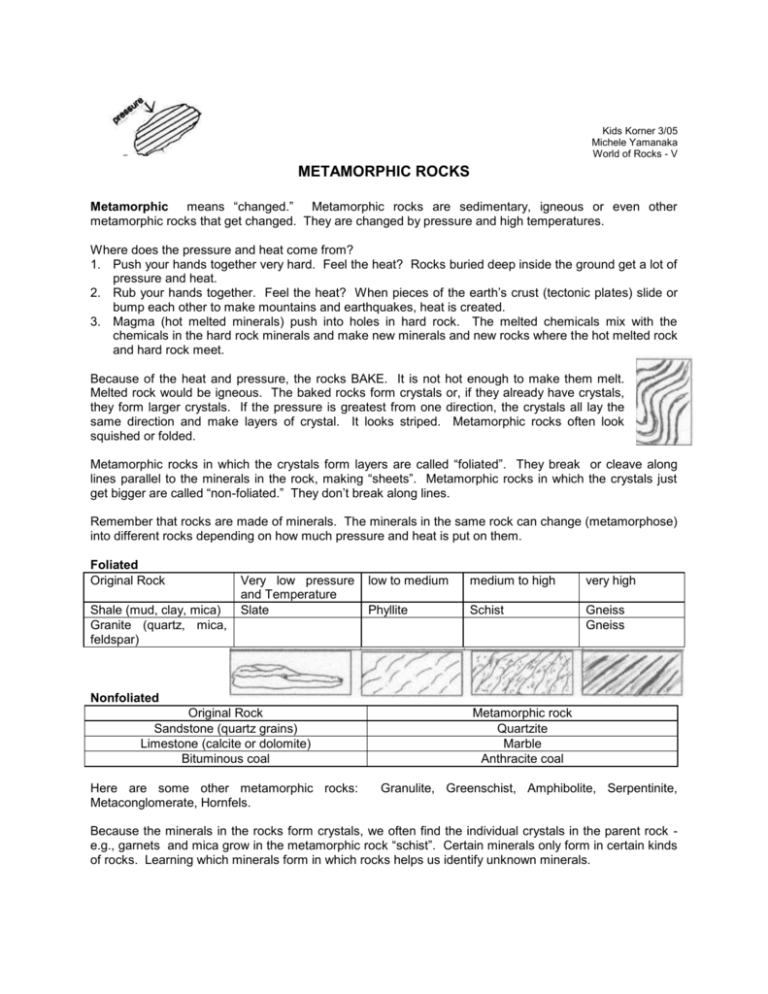Metamorphic Rocks
advertisement

Kids Korner 3/05 Michele Yamanaka World of Rocks - V METAMORPHIC ROCKS Metamorphic means “changed.” Metamorphic rocks are sedimentary, igneous or even other metamorphic rocks that get changed. They are changed by pressure and high temperatures. Where does the pressure and heat come from? 1. Push your hands together very hard. Feel the heat? Rocks buried deep inside the ground get a lot of pressure and heat. 2. Rub your hands together. Feel the heat? When pieces of the earth’s crust (tectonic plates) slide or bump each other to make mountains and earthquakes, heat is created. 3. Magma (hot melted minerals) push into holes in hard rock. The melted chemicals mix with the chemicals in the hard rock minerals and make new minerals and new rocks where the hot melted rock and hard rock meet. Because of the heat and pressure, the rocks BAKE. It is not hot enough to make them melt. Melted rock would be igneous. The baked rocks form crystals or, if they already have crystals, they form larger crystals. If the pressure is greatest from one direction, the crystals all lay the same direction and make layers of crystal. It looks striped. Metamorphic rocks often look squished or folded. Metamorphic rocks in which the crystals form layers are called “foliated”. They break or cleave along lines parallel to the minerals in the rock, making “sheets”. Metamorphic rocks in which the crystals just get bigger are called “non-foliated.” They don’t break along lines. Remember that rocks are made of minerals. The minerals in the same rock can change (metamorphose) into different rocks depending on how much pressure and heat is put on them. Foliated Original Rock Shale (mud, clay, mica) Granite (quartz, mica, feldspar) Very low pressure and Temperature Slate low to medium medium to high very high Phyllite Schist Gneiss Gneiss Nonfoliated Original Rock Sandstone (quartz grains) Limestone (calcite or dolomite) Bituminous coal Here are some other metamorphic rocks: Metaconglomerate, Hornfels. Metamorphic rock Quartzite Marble Anthracite coal Granulite, Greenschist, Amphibolite, Serpentinite, Because the minerals in the rocks form crystals, we often find the individual crystals in the parent rock e.g., garnets and mica grow in the metamorphic rock “schist”. Certain minerals only form in certain kinds of rocks. Learning which minerals form in which rocks helps us identify unknown minerals.







